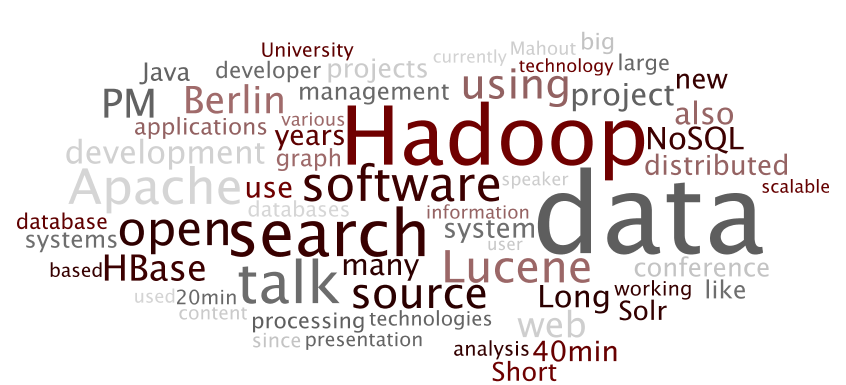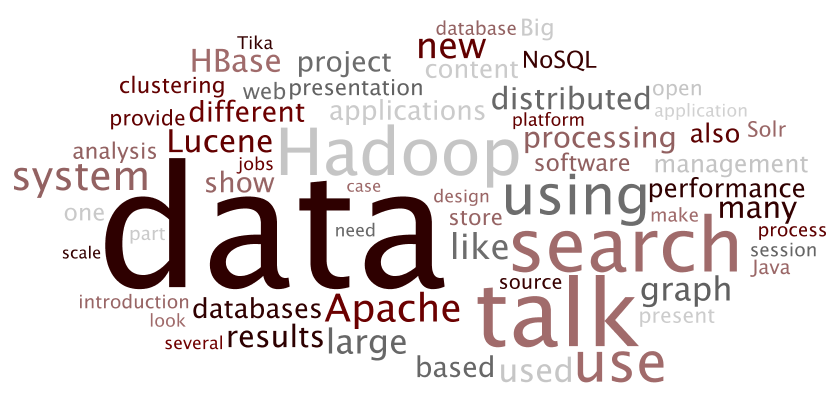Submissions closed - some statistics
As of today the call for presentations for Berlin Buzzwords is closed. We received nearly 100 submissions this year and are now busy reading, rating and ranking the proposals. Judging from a first scan there are many awesome submissions of technical presentations so it will be extremely easy to provide a great schedule but also extremely hard to make a selection.
We will start publishing more details on accepted speakers in the next few weeks. Until then we have prepared some initial glimpse at the talks waiting for you that we would like to share with you.

We asked speakers for their preference with respect to presentation length. Seems like most speakers would like to give a long 40min talk on their topic. However some would like to do a 10min lightning talk to pitch their project.
After that we took a closer look at the exact texts that were submitted. As promised in an earlier post we are happy to share an updated tag cloud of all submissions. We simply took all submissions in their raw form, got the tokenised, normalised capitalisation and introduced a frequency based threshold such that only 60 tags were included.

The result can be seen on the left. There were very many submissions for the search tracks, a lot for the Hadoop tracks. The small size of the NoSQL tag can be explained by speakers submitting talks that would most likely make it into the NoSQL track usually don't mention that term so often in their submission.
Taking a closer look at the titles only the picture gets a bit clearer - now we can clearly see several projects in there that one might want to count as NoSQL. Same applies when taking a closer look at the abstracts only (see picture on the right hand side below).


Last but not least we would also like to share some details of where submissions came from. We have sorted origins, kept unique entries and run them through a geo coding web service. The result can be seen below:
Map generated by using the Batchgeo service.
- isabel's blog
- Login to post comments



















